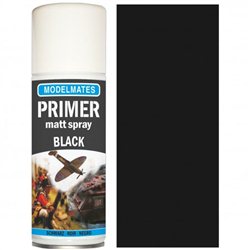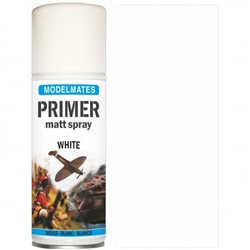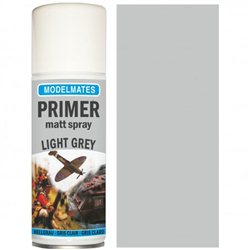Spray cans and airbrushes are favoured tools with modellers because of the smooth and life-like finishes that they...
No products
Product successfully added to your shopping cart
There are 0 items in your cart. There is 1 item in your cart.
Search Tips
Christmas and New Year
We are dispatching orders every weekday apart from Christmas Day, Boxing Day and New Year's Day.
If you order is time critical, select next day delivery at checkout.
The shop in Sandown is closed from 25th December, reopening on 30th December.
What is the difference a primer and standard paint?
Both primer and standard paint play essential but distinct roles in achieving a high-quality finish. Their functions differ in purpose, composition and application, which are crucial for modellers aiming to produce a realistic and long-lasting result. Understanding the difference between primer and paint can significantly improve the appearance and durability of a model.
Primer serves as a preparatory layer that is applied before the main paint. Its primary role is to create a smooth, uniform surface, ensuring that the paint adheres properly. Scale model kits are often made from various materials such as plastic, resin or metal, which can have uneven textures or slight imperfections. A primer helps to conceal these flaws by filling in minor gaps or scratches, creating a consistent surface for the subsequent paint layers. This is particularly important when working with materials like resin, which are more porous and may absorb paint unevenly without the use of primer.
Additionally, primers help to enhance the paint's grip. Without a primer, the paint may struggle to stick to certain surfaces, leading to peeling or chipping over time. Primers, especially those designed for scale modelling, often have a slightly rougher texture than standard paint, which allows the topcoat to adhere more effectively. This is particularly beneficial when using multiple layers of paint or working with delicate details on a model, as the primer ensures that the paint won’t rub off easily during handling or assembly.
Standard paint, on the other hand, is the primary layer that gives a model its colour and finish. While primer is designed for functionality, the paint is responsible for aesthetics. Scale model paints come in various finishes, including matt, satin, and gloss, and are available in a wide range of colours. These paints are designed to provide an even coat and are typically applied in thin layers to preserve the fine details of the model. Unlike primer, which is usually neutral in colour (such as grey or white), the paint is intended to be the visible layer and is often chosen to replicate the appearance of real-life vehicles, figures or landscapes.
While a primer prepares the surface, paint provides the finishing touches. However, in scale modelling, the type of paint used is crucial. Acrylic, enamel, and lacquer paints are commonly used in this hobby, each offering different drying times, finishes and durability. Acrylic paints are water-based and relatively easy to work with, making them a popular choice for beginners. Enamels and lacquers, on the other hand, provide more durable and vivid finishes but can be trickier to apply, requiring solvents for thinning and cleaning.
In summary, the key difference between primer and paint in scale modelling lies in their purposes. Primer is applied first to prepare the surface and ensure paint adhesion, while standard paint is used to achieve the final aesthetic effect. Both are necessary for achieving a high-quality model, as skipping primer can lead to uneven paint application, while skipping the paint would leave a model without its intended appearance. By understanding and properly using both primer and paint, modellers can significantly enhance the realism and durability of their creations.
Click here to receive the tips weekly in your mailbox. You can unsubscribe at any time.


.jpg)







